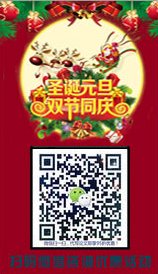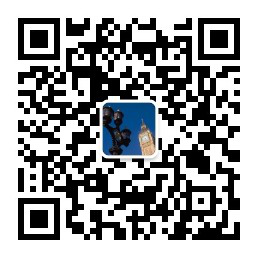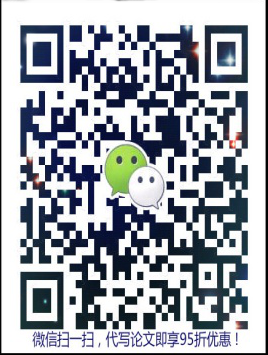联系方式
more本类最新英语论文
- 2024-04-28语块化教学对初中英语写作素..
- 2024-04-11洛阳方言擦音对初中生英语擦..
- 2024-04-06主题和语义聚类呈现对初中生..
- 2024-04-05基于英语学习活动观的初中英..
- 2024-02-25基于学习活动观的初中英语词..
- 2024-01-21初中生英语课堂环境感知调查..
- 2024-01-16基于模因论初中英语词汇教学..
- 2024-01-07通过隐喻能力培养消解初中生..
- 2023-12-25批判性阅读教学对初中生英语..
- 2023-12-17基于深度学习的初中英语阅读..
more热门文章
- 2010-02-03the application of body l..
- 2010-02-03the stimulus to students’..
- 2010-02-27the role of the english t..
- 2010-02-03交际教学法在中学英语中的应..
- 2010-02-03初中英语课堂互动教学的具体..
- 2010-02-03分析情境教学法在中学英语教..
- 2010-02-03非语言交际在中学英语教学中..
- 2010-02-04探讨英语教学中提高跨文化交..
- 2010-03-11on interest-arousing stra..
- 2010-02-26how to improve english le..
more留学论文写作指导
- 2024-03-31卡森•麦卡勒斯小说中..
- 2024-03-28美国黑人女性心理创伤思考—..
- 2024-03-27乔治·艾略特《织工马南》中..
- 2024-03-21超越凝视:论《看不见的人》..
- 2024-03-19《哈克贝利•费恩历险..
- 2024-03-13心灵救赎之旅——从凯利的三..
- 2024-02-22文学地理学视角下的《印度之..
- 2023-05-03英、汉名词短语之形容词修饰..
- 2023-02-07目的论视域下5g—the futur..
- 2022-07-04二语英语和三语日语学习者的..
初中英语教学之交互型教学法实证研究 [2]
论文作者:www.51lunwen.org论文属性:硕士毕业论文 thesis登出时间:2014-08-23编辑:lgg点击率:5223
论文字数:36900论文编号:org201408161256548962语种:英语 English地区:中国价格:$ 66
关键词:interactive teaching method英语教学英语学习兴趣英语水平英语学习
摘要:本文是初中英语教学论文,Interactive teaching method originated from the acknowledgment of thecommunicative approach, and characterized for its communicative nature. And the word“interaction” as the key point of the approach means that the mutual communicationhappens between teachers and students, or among students themselves.
Chapter Two Literature Review
2.1 Related concepts of interaction and the Interactive Teaching Method
What is interaction? The concept of “interaction” was introduced to the educationfield from social psychology and social communication. In general meaning, “interaction”means people influence and effect on each other through various forms in a certain socialbackground. The concept “interaction” was firstly came up in 1980 by Ceorg. Simmel, aGerman sociologist.Interaction is an important word for language teachers. In the era of communicativelanguage teaching, interaction is, in fact, the heart of communication; it is whatcommunication is all about. We send messages; we receive them; we interpret them in acontext; we negotiate meanings; and we collaborate to accomplish certain purposes. Andafter several decades of research on teaching and learning languages, we have discoveredthat the best way to learn to interact is through interaction itself.From the beginning of language study, classrooms should be interactive. Wilga Riversputs it this way: Through interaction, students can increase their language store as theylisten to or read authentic linguistic material, or even the output of their fellow students indiscussions, skits, joint problem-solving tasks, or dialogue journals. In interaction, studentscan use all they possess of the language----all they have learned or casually absorbed----inreal-life exchanges..... Even at an elementary stage, they learn in this way to exploit theelasticity of language.
………….
2.2 The Theoretical Basis of the Interactive Teaching Method
The part is to introduce the theoretical basis of the Interactive Teaching Method,which is the theory of J.Piaget’s Constructivism, the Input Hypothesis, the OutputHypothesis, and the Interaction Hypothesis. The Interactive Teaching Method was established upon the theory of J.Piaget’sConstructivism, which considered that the process of learning comes from learners’initiative construction on knowledge in external environment such as textbooks, learningequipment, teachers, and classmates even the whole society. According to the theory,learner is the main body, while environment is the promotion so as to acquire simplemeaning to complex ones via thinking over and over again. In J.Piaget’s theory, learning ismutual effect between the existing knowledge experience and the new experience, so as tofulfill learners’ knowledge. For instance, once a child gets a pen for the first time (called“external environment” by Piaget), he doesn’t know what to do, which is a balance. Then,thinking about it for a while, perhaps drawing a stroke on a paper unconsciously or seeingother people doing this, he gets the information and imitates it to form a kind of knowledge.
…………..
Chapter Three Research Methodology........16
3.1 Research Questions .......16
3.2 Subjects .......16
3.3 Instruments........17
3.3.1 Questionnaire ......17
3.3.2 Pre-test ....17
3.3.3 Post-test.........17
3.4 Procedures .........17
3.5 Sample classes.........21
Chapter Four Data analysis and discussion ..... 29
4.1 Data collection and analysis of questionnaires....... 29
4.1.1 Description of the questionnaire....... 29
4.1.2 Data analysis and discussion of the first question本论文由英语论文网提供整理,提供论文代写,英语论文代写,代写论文,代写英语论文,代写留学生论文,代写英文论文,留学生论文代写相关核心关键词搜索。

 英国
英国 澳大利亚
澳大利亚 美国
美国 加拿大
加拿大 新西兰
新西兰 新加坡
新加坡 香港
香港 日本
日本 韩国
韩国 法国
法国 德国
德国 爱尔兰
爱尔兰 瑞士
瑞士 荷兰
荷兰 俄罗斯
俄罗斯 西班牙
西班牙 马来西亚
马来西亚 南非
南非






